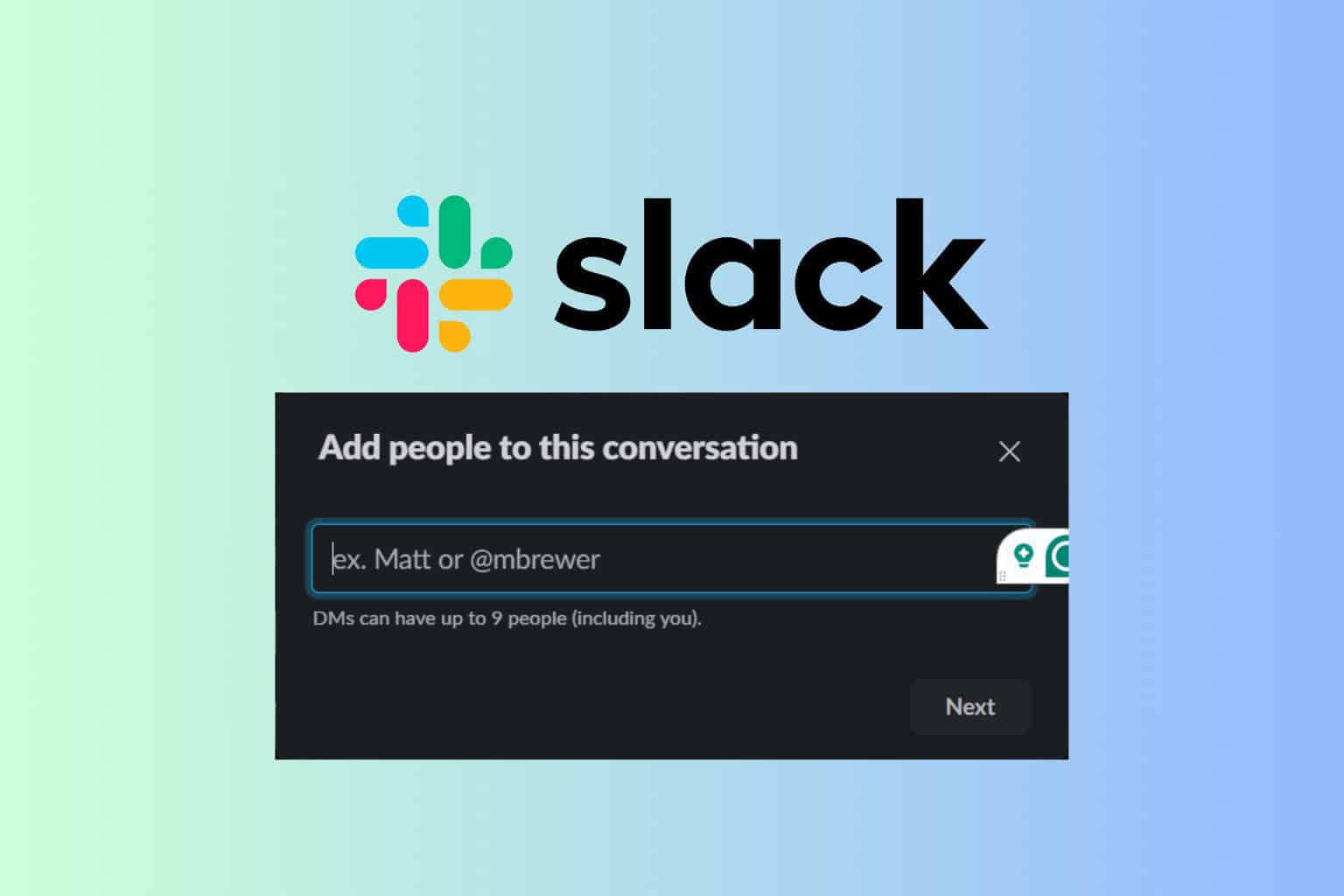Why Slack and not Skype? Top reasons for your choice
5 min. read
Updated on
Read our disclosure page to find out how can you help Windows Report sustain the editorial team. Read more
Key notes
- Slack and Skype are some of the biggest names in the collaborative tool world.
- Today we will be looking at them side-by-side, trying to determine which is the best.
- We will be looking over their toolset, their pros, and finally their cons for better judgment.
- In the end, we will finally answer the question: Which is better, Slack or Skype?

Why choosing Slack and not Skype? There was a time when Skype used to be the most popular business collaboration software.
Small and growing businesses all over the world were enjoying it for instant team communication.
Those days are long gone. Slack stepped in as an ingenious business collaboration tool that works across a variety of platforms.
Slack offers great value even in its free version of the app and keeps on refining its product on a day-to-day basis to adapt to a constantly changing world.
That’s how it turned into everyone’s favorite work messaging tool in a relatively short amount of time. Are you still undecided? Following the crowd isn’t your style.
Your choice should come from a place of reason, not simply convenience.
Through this article, we aim to provide a clear picture of what to expect from these tools. Both Slack and Skype give you a solid messaging feature to start from, but Slack stands out thanks to a few other efficient features.
How is Slack different from Skype?
1. Fewer communication distractions in your team space
First, let’s talk about the very essence of these tools. Skype’s main function remains video calling. While video calls are still essential to most remote business meetings or quick roundups, they aren’t enough any longer.
Like Slack, Skype currently offers instant messaging and one-on-one or group audio and video calls. Slack holds through the winning card when it comes to one-on-one and group messaging via direct messages or multiple channels.
Moreover, if you can communicate with everyone on Skype, Slack limits the contacts list to those working in your company. This way, unproductive chit-chat is out of the picture for good.
2. Slack integrates with most apps and services
Microsoft Office integration is something Skype really excels at. This includes Word, Excel, PowerPoint, OneNote, and Outlook as well.
On the other hand, Slack has the capability to integrate with apps and services that your team most likely uses daily.
There’s no need to interrupt the workflow and switch between apps. Imagine users getting all their notifications within the Slack platform directly.
Integration includes BlueJeans, Google Hangouts, Dropbox, Github, Twitter, Trello, Zoom, or Google Drive. That’s how you can share and view Google Docs, Sheet, or Slide files during your most important calls and within conversations.
3. Slack lets you access the right information
If you can only search for text on Skype and view the files folder, Slack takes accessing the right information at a new level.
Search functionality in Slack allows more than finding relevant messages, files, channels, or people. You can easily find what you need within the documents and get work done on time.
4. Configuring notifications is of great importance
Keeping yourself in the loop is the key to working faster and smarter, and hence it is an important feature to consider. Skype lets you control push notifications as per your preferences and its DND saves a great deal of annoyance.
Skype has a better record at notifications, but we think Slack matches up really well against it too. Slack does notify users of all messages that are directed to them.
Even so, features such as the badge appearing before an unread notification or changing the preference of notification appearance and sound are compensatory measures to keep in mind.
5. Slack provides excellent customer support
The coordinated and collaborative customer support in Slack could make a difference in your team’s efficiency in the long run.
The tool provides excellent online customer support on their website, not to mention that Slack’s Twitter page quickly responds to all questions you tweet at them.
If you want, you can also automatically post new support tickets directly in channels. Just remember to keep tabs on the status of tickets without leaving Slack. Meanwhile, Skype offers no support.
6. Can Slack talk to Skype?
Do you know how easy it is to access the familiar voice and video calling you’ve grown to use in the past few years with Skype, right from within Slack?
To integrate Skype and Slack, go to the Skype integration for Slack product page, and click the Add to Slack button.
Confirm the team that you want to integrate with and once the integration is complete, anyone on the Slack team can start a Skype call from a computer.
Typing /skype into the chat does the trick and a join link will appear when the call is set up.
This ends our attempt to help you search for the best team collaboration tool. Slack seems to transform your team from a basic communication tool to a central core of productivity.
You’ve got the key to working faster and smarter, so we are going to let you decide the best, considering all the features compared above.












User forum
0 messages